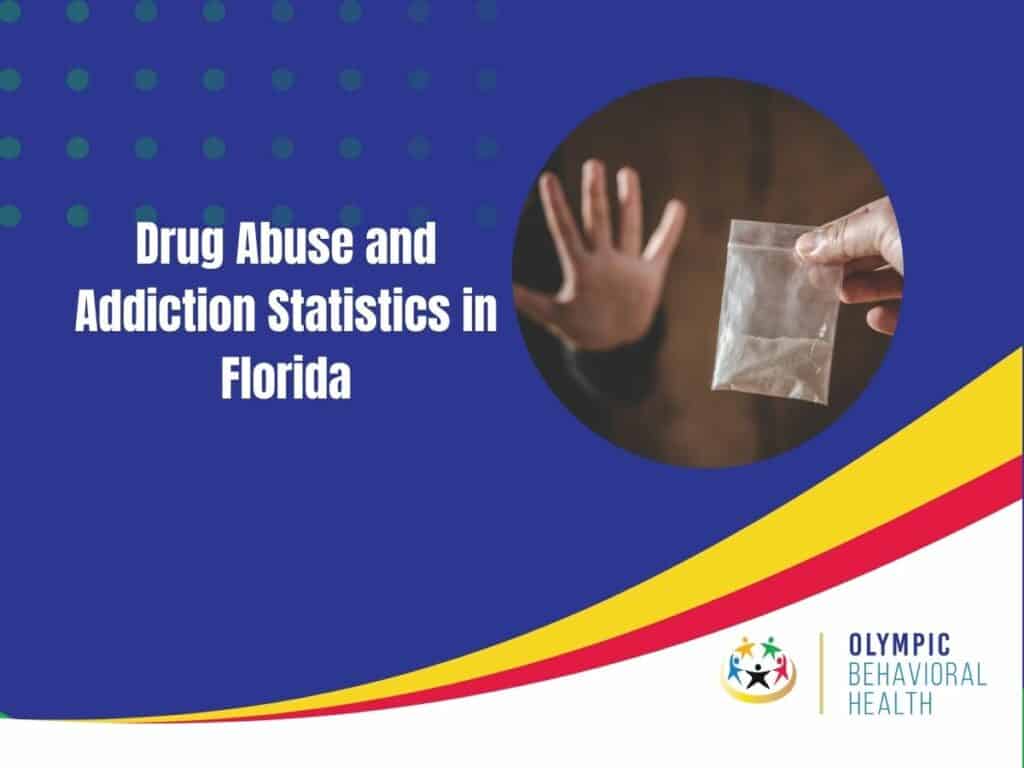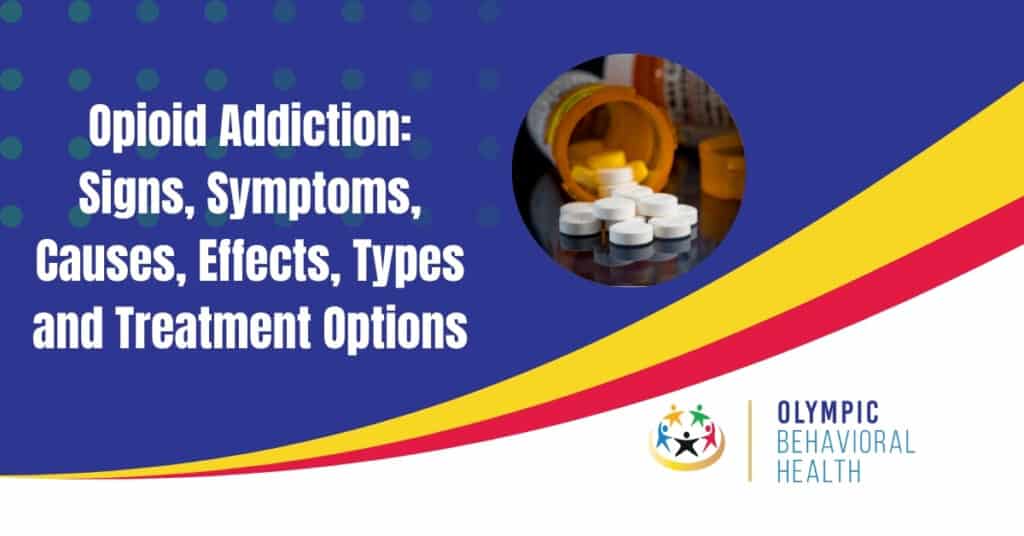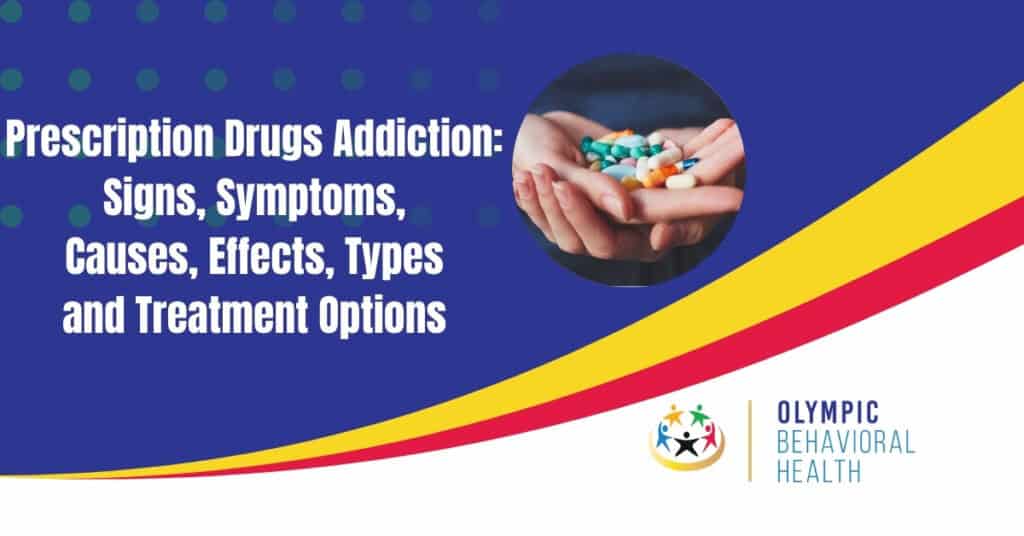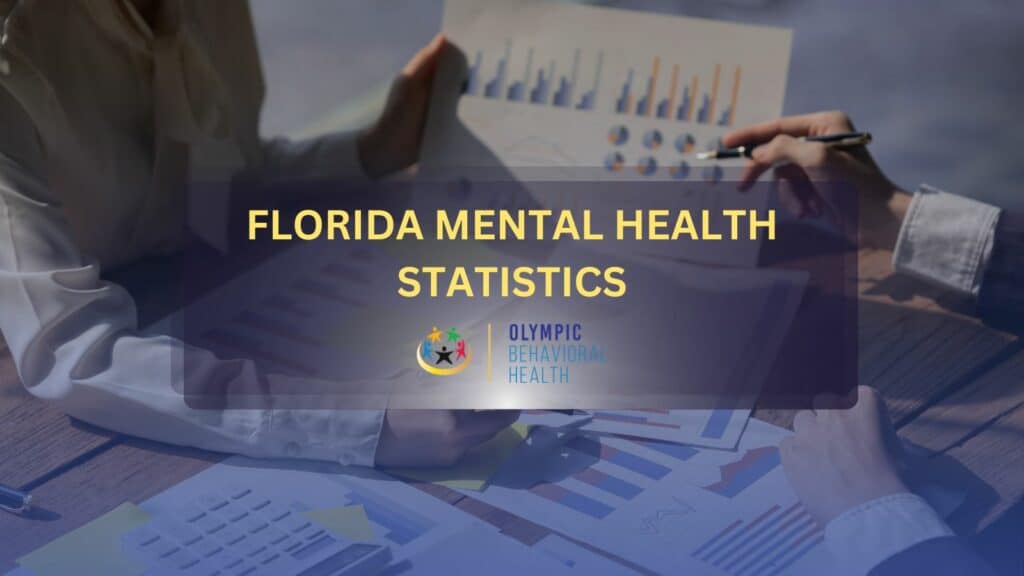For many years, Florida has had a complex relationship with illegal substances. This relationship created multiple challenges that span from prescription medications to illicit substances becoming more accessible. Florida has been hit with the opioid crisis pretty hard as the rates of overdose deaths from drugs such as fentanyl and heroin. This is on top of prescription drug misuse and the surge of bath salts and flakka.
To tackle this issue, it’s imperative to delve into Florida’s landscape of commonly used drugs. That being said, here are some of the things you need to know:
KEY TAKEAWAYS
- Florida saw 7,827 drug overdose deaths, marking a rate of 37.5 deaths per 100,000 individuals putting the state in the 18th highest in terms of drug overdose fatalities in the country
- Over 9,038 Floridians passed away with one or more prescription drugs detected in their system, marking a rise of more than 26%.
- There are more female inpatients than males for opioids (52.0%) and sedative (54.8%) use.
- Marijuana use in adults aged 18 to 25 has a prevalence rate of 32.9% between 2019 and 2020.
- The use of illicit drugs in Florida brought a total healthcare cost of $6.4 billion for over 3 years.
- Only 31.7% of Floridians expressed readiness to administer Narcan if accessible.
- There was a noteworthy decrease in past 30-day synthetic marijuana use among Florida high school students, plummeting from 4.3% to 0.8%.
General Insights
Florida suffers from the awful effects of substance abuse. The opioid epidemic is also becoming a huge problem in the state where overdoses are now so common.
- In 2022, Florida recorded 7,827 drug overdose deaths, with a rate of 37.5 deaths per 100,000 individuals, ranking 18th highest in the nation for drug overdose fatalities.
- Florida recorded 7,842 deaths related to opioids, averaging over 21 fatalities per day in 2020. This marked an increase of 1,714 deaths from the previous year, reflecting an almost 28 percent rise in opioid-related fatalities.
- In total, over 9,038 Floridians passed away with one or more prescription drugs detected in their system, marking a rise of more than 26%. Drugs were either identified as the cause of death or were found present in the deceased individuals, possibly in combination with other illicit drugs or alcohol.
- Fentanyl caused the most number of drug-related deaths in Florida in the year 2020 with 5,302 deaths. This is followed by cocaine with 2,400 deaths and ethyl alcohol with 1,389 deaths.
| Drug | Deaths |
| Fentanyl | 5,302 |
| Cocaine | 2,400 |
| Ethyl Alcohol | 1,389 |
| Methamphetamine | 1,386 |
| Benzodiazepines | 1,152 |
| Morphine | 916 |
| Fentanyl Analogs | 848 |
| Amphetamine | 768 |
| Heroin | 708 |
- Marijuana use in adults aged 18 to 25 has a prevalence rate of 32.9% between 2019 and 2020. Adults belonging to this age group have the highest prevalence of substance abuse and substance use disorders rate in Florida.
| 18 and Older | 18-25 | 26 and Older | |
| Marijuana Use | 16.6% | 32.9% | 14.5% |
| Cocaine Use | 1.7% | 4.4% | 1.4% |
| Methamphetamine Use | 0.6% | 0.6% | 0.6% |
| Heroin Use | 0.2% | 0.1% | 0.2% |
| Prescription Pain Reliever Misuse | 3.6% | 4.8% | 3.4% |
| Illicit Drug Use Disorder | 7.4% | 17.0% | 6.2% |
| Alcohol Use Disorder | 9.5% | 13.6% | 9.0% |
- Only 28% of Medicaid enrollees in Florida diagnosed with opioid use disorder (OUD) are willing to go on medication-assisted treatment. There are approximately 25,866 Florida Medicaid enrollees diagnosed with OUD.
- Among newly diagnosed individuals, about 56% who commenced methadone treatment sustained it for 180 days. In contrast, only around 19% of those starting treatment with buprenorphine continued for the same duration.
- The use of illicit drugs in Florida brought a total healthcare cost of $6.4 billion for over 3 years. Approximately $2.16 billion in patient care was paid by Medicare, while Medicaid and commercial insurance paid an estimated amount of $1.36 billion.
- Cocaine use (9.25%) or multiple drug use (6.12%) led to higher costs in the emergency department, compared to those with cannabis substance use disorder (SUD). However, for inpatient care, individuals with opioid use (23.40%) or inhalant use (16.30%) incurred significantly higher expenses than those with cannabis SUD.
- There are more female inpatients than males for opioids (52.0%) and sedative (54.8%) use. Male inpatients have a rate of 48.0% for opioids and 45.2% for sedative use.
- Among Hispanic patients, illicit drug use percentages ranged from 7.9% for stimulants to 14.5% for hallucinogens. Meanwhile, Black patients showed a wider range, from 6.0% for sedatives to a significant 45.2% for cocaine use.
- White patients displayed the broadest range, from 50% for cocaine use to as high as 89.3% for sedatives in terms of illicit drug use percentages. Patients of other racial backgrounds had percentages ranging from 4.7% for opioids, sedatives, and multiple drugs to 10.4% for inhalant use.
| Gender | Ethnicity | Race | |||||
| Female | Male | Hispanic | Non-Hispanic | Black | Other | White | |
| Opioids | 52.00% | 48.00% | 8.50% | 91.50% | 10.50% | 4.70% | 84.80% |
| Sedatives | 54.80% | 45.20% | 12.00% | 6.00% | 4.70% | 89.30% | |
| Cocaine | 33.00% | 67.00% | 13.30% | 86.70% | 45.20% | 4.80% | 50.00% |
| Stimulants | 40.50% | 59.50% | 7.90% | 92.10% | 10.30% | ||
| Hallucinogens | 24.20% | 75.80% | 14.50% | 85.50% | 23.10% | 8.60% | 68.20% |
| Inhalants | 31.00% | 69.00% | 10.90% | 89.10% | 20.80% | 10.40% | 68.80% |
| Multiple Drugs | 38.70% | 61.30% | 11.10% | 88.90% | 22.10% | 4.70% | 73.20% |
| Cannabis | 38.00% | 62.00% | 11.50% | 88.50% | 34.10% | 5.80% | 60.20% |
| Total Counts | 304,815 | 405,170 | 74,192 | 635,793 | 164,808 | 35,236 | 509,941 |
- In the same year, Florida experienced 5,940 fatalities due to opioid overdoses, representing 76% of the state’s total drug overdose deaths. Nationally, opioid overdose deaths comprised 75% of all drug-related fatalities in the United States that same year.
- Between 2011 and 2021, Florida observed a surge in the age-adjusted opioid overdose death rate, rising from 8.4 to 28.9 per 100,000. Similarly, across the United States during that period, the age-adjusted death rate due to opioid overdose increased from 7.3 to 24.7 per 100,000.
Substance Use and Abuse Among Youth
On top of the drug abuse and addiction problem in Florida is the ease of access to substances among the younger generation. This poses a huge problem, especially in the middle of an opioid epidemic.
- Between 2010 and 2022, the rates of recent alcohol and cigarette use dropped by 17.0 and 7.6 percentage points respectively. This signals substantial declines in drinking and smoking habits among students in Florida.
- Between 2010 and 2022, the prevalence of past-30-day marijuana use among Florida students showed a decline from 13.0% to 8.3%. Despite some fluctuations, the overall trend in marijuana use indicates a decrease over this period.
- Among Florida students, 31.0% have reported using alcohol at some point, with 11.8% reporting recent use within the past 30 days.
- Vaping marijuana among students stood out with a reported past-30-day rate of 6.8%, significantly surpassing cigarette use within the same period. Students also reported a 9.7% past-30-day rate for vaping nicotine, which was nearly ten times higher than cigarette use.
- In Florida’s high school student population, riding with a drinking driver was reported at 13.5%, while riding with a marijuana-using driver stood at 17.8%. Additionally, rates for driving after consuming alcohol and using marijuana were reported at 3.3% and 6.4%, respectively.
- Usage rates for substances beyond alcohol, cigarettes, and marijuana within the last 30 days are extremely minimal, varying from 1.6% for inhalant use to as low as 0.2% for heroin use.
- High school students in Florida have a 1.1% and even lower 30-day prevalence rate for inhalants and prescription amphetamines.
- Students also have a 1.0% or less 30-day prevalence rate for synthetic marijuana, club drugs, cocaine or crack cocaine, methamphetamine, prescription pain relievers, over-the-counter drugs, prescription depressants, heroin, and hallucinogens. Hallucinogens include mushrooms, PCP, and LSD. The prevalence rate shows the low usage of such substances within this demographic.
- Between 2012 and 2022, there was a noteworthy decrease in past 30-day synthetic marijuana use among Florida high school students, plummeting from 4.3% to 0.8%. This substantial decline underscores a significant shift in the reported usage of synthetic marijuana within this timeframe.
- The prevalence of lifetime alcohol use in high school students decreased from approximately 52% to 33.6%. Meanwhile, the past 30-day prevalence of alcohol use decreased by 15 percentage points, from 29% to 14%.
- The ease of accessing marijuana, categorized as “sort of easy” or “very easy,” decreased from approximately 44% to 32%. This is between 2010 and 2020; the decline signifies a notable shift in perceptions regarding the accessibility of marijuana to students.
- About 9.8% of students smoked marijuana, and 3.4% used another drug before or during school within the past 12 months. Moreover, 6.4% of middle and high school students reported consuming alcohol before or during school within the same timeframe.
- The lifetime prevalence rate of opioid misuse among high school students in Florida stands at 2.8%. The stimulant misuse rate stands at 4.1% while the opioid or stimulant misuse has a rate of 5.7%.
County-Specific
Plenty of counties in the state have high rates of drug-related emergencies. The popular counties are also ravaged by drug overdose deaths, particularly opioids.
Age-adjusted Deaths From Drug Poisoning, by County
| Deaths | Rate Per 100,000 Population | |
| Florida | 7,556 | 34.9 |
| Alachua | 64 | 26.7 |
| Baker | 15 | 54.4 |
| Bay | 63 | 35.4 |
| Bradford | 8 | 24.6 |
| Brevard | 198 | 34.5 |
| Broward | 656 | 32.1 |
| Calhoun | 3 | 25.8 |
| Charlotte | 59 | 44.1 |
| Citrus | 76 | 55.8 |
| Clay | 73 | 33.7 |
| Collier | 119 | 39.3 |
| Columbia | 18 | 26.3 |
| Miami-Dade | 321 | 11.2 |
| DeSoto | 9 | 29.4 |
| Dixie | 5 | 28.9 |
| Duval | 518 | 49.8 |
| Escambia | 242 | 75.0 |
| Flagler | 44 | 46.9 |
| Franklin | 3 | 19.5 |
| Gadsden | 13 | 26.7 |
| Gilchrist | 8 | 55.1 |
| Glades | 8 | 65.9 |
| Gulf | 4 | 25.4 |
| Hamilton | 5 | 43.0 |
| Hardee | 4 | 15.9 |
| Hendry | 10 | 26.3 |
| Hernando | 99 | 52.4 |
| Highlands | 31 | 34.1 |
| Hillsborough | 568 | 36.2 |
| Holmes | 4 | 22.9 |
| Indian River | 49 | 39.8 |
| Jackson | 9 | 19.8 |
| Jefferson | 2 | 13.1 |
| Lafayette | 2 | 18.1 |
| Lake | 140 | 40.6 |
| Lee | 317 | 45.7 |
| Leon | 51 | 18.7 |
| Levy | 17 | 45.0 |
| Liberty | 1 | 9.9 |
| Madison | 1 | 3.4 |
| Manatee | 156 | 43.6 |
| Marion | 209 | 62.3 |
| Martin | 38 | 28.0 |
| Monroe | 36 | 42.3 |
| Nassau | 37 | 43.0 |
| Okaloosa | 115 | 54.1 |
| Okeechobee | 20 | 52.6 |
| Orange | 376 | 24.4 |
| Osceola | 115 | 26.7 |
| Palm Beach | 493 | 35.2 |
| Pasco | 335 | 58.6 |
| Pinellas | 538 | 56.6 |
| Polk | 235 | 31.7 |
| Putnam | 24 | 37.3 |
| St. Johns | 62 | 22.2 |
| St. Lucie | 107 | 33.4 |
| Santa Rosa | 70 | 34.1 |
| Sarasota | 128 | 38.5 |
| Seminole | 138 | 27.3 |
| Sumter | 38 | 53.7 |
| Suwannee | 16 | 40.9 |
| Taylor | 4 | 20.3 |
| Union | 5 | 30.4 |
| Volusia | 317 | 62.2 |
| Wakulla | 12 | 33.9 |
| Walton | 31 | 36.0 |
| Washington | 6 | 25.5 |
- Escambia has the highest rate of deaths from drug poisoning with 73.9 deaths per 100,000 population. This county is followed by Glades with a rate of 65.7/100,000 and Pasco with 56.6/100,000.
- On the contrary, Madison has the lowest rate of deaths from drug poisoning with 5.5 deaths per 100,000 population. This is followed by Miami-Dade with 11.6/100,000 and Jefferson with 13.5/100,000.
- This October 2023, there were a total of 383 emergency medical services overdose events in Palm Beach County. This is 16% higher than September but 19% lower than October last year.
- In 2022, Palm Beach County witnessed approximately 8,325 emergency department visits related to suspected overdoses, reflecting a 4.2% decrease from 2021. Across the year, these departments handled an average of 693.8 overdoses monthly, peaking at 791 visits in January and reaching a low of 638 in August.
- In the same year, January and July observed higher emergency department visits related to suspected overdoses compared to their 2021 counterparts, marking a 20.4% increase in visits for January. In contrast, April saw the most significant decline, experiencing a 15.1% decrease in visits compared to April 2021.
- In Orange County, the majority of overdose decedents were male, comprising 78.4% of the cases, while females accounted for 21.6% of the total. The overdose decedents consisted of 1,061 males and 292 females out of a total of 1,353 individuals.
- Meanwhile, the majority of overdose decedents were White (80.8%), followed by Black individuals (14.6%), with a smaller portion categorized as Other/Unknown (4.9%). Among overdose decedents, 197 were Black, 1,090 were White, and 66 fell into the Other/Unknown category out of a total of 1,353 individuals.
- When it comes to homeless status, among overdose decedents, 9.6% were homeless in Orange County, while the majority, 90.1%, were not homeless. There were also 0.3% of cases marked as Missing* in the homeless status category. This includes 130 individuals classified as homeless, 1,219 as not homeless, and 4 cases marked as Missing* out of 1,353 individuals.
- The drug overdoses within Orange County consistently increased from 2019 to 2021, with 174 more overdoses in 2021 compared to 2019. At the same time, the percentage of all drug overdoses involving fentanyl use has consistently increased from year to year, with a peak of 78.7% in 2021.
- The majority of overdose decedents in Orange County, accounting for 52.7%, showed the presence of polyfentanyl, signifying its significant role in fatal overdoses. Following closely behind polyfentanyl, fentanyl was detected in 22.6% of cases, indicating its substantial presence among the primary substances contributing to fatal overdoses in the region.
- Accounting for 13.6% of cases in Orange County, non-opioid substances, distinct from opioids, were identified among overdose decedents, suggesting a varied landscape of substances contributing to fatal incidents in the region. Opioids were detected in 2.5% of cases, indicating a smaller but notable presence.
Addressing the Issue
Like any other state in the country, Florida is making efforts to make Naloxone more accessible. Here are some facts about the state’s response to overdoses:
- The Overdose Prevention Program (OPP) by DCF has distributed more than 373,000 naloxone kits since its launch. Additionally, nearly 22,000 individuals received training on how to prevent, recognize, and respond to overdoses, resulting in reported over 23,000 instances of overdose reversals.
- The state has a $484 million Opioid Settlement Agreement Funding for Naloxone with CVS. This Naloxone Provision will last 18 years.
- Walgreens also has an Opioid Settlement Agreement Funding for Naloxone with Florida, amounting to $683 million. The agreement also lasts for 18 years as well.
- Only 31.7% of Floridians expressed readiness to administer Narcan if accessible. This shows a proactive stance in responding to overdoses if equipped with the medication.
- About 20.2% of Floridians indicated they would opt to call 911 and await professional assistance. Even if equipped with Narcan, Floridians will prioritize the involvement of first responders.
- Approximately 42.8% conveyed a willingness to administer Narcan, contingent on obtaining prior training. This underscores the importance of knowledge and preparedness in using the medication effectively.
- About 5.3% of Florida residents expressed hesitancy in administering Narcan to someone undergoing an overdose. These individuals prefer not to intervene in such situations.
- About 16.7% of Floridians expressed strong support for limiting the number of times first responders administer Narcan on the same individual amid the cost concerns and increased overdoses in the state. This is in consideration of Narcan costing $60 per use.
- Only 21.8% somewhat supported the idea of limiting Narcan use by first responders on the same person. This is likely considering the cost implications and the rising number of overdoses.
- Approximately 16.0% leaned toward opposition to limiting Narcan use by first responders. This is possibly due to concerns about restricting life-saving interventions, despite cost considerations.
- Only 28.3% of Floridians strongly opposed limiting Narcan use. Individuals emphasize the importance of unrestricted access to this life-saving medication during multiple overdose incidents.
- Still, about 17.2% remained unsure about their stance regarding limiting Narcan use by first responders on the same individual in light of cost and overdose surge in the state.
FAQs
What is the estimated healthcare cost associated with illicit drug use in Florida?
Illicit drug use in Florida incurred a total healthcare cost of $6.4 billion over three years, with Medicare paying approximately $2.16 billion, and Medicaid and commercial insurance paying an estimated $1.36 billion each.
Does Florida have a lot of opioid-related deaths?
Florida recorded 7,842 deaths related to opioids in 2020, reflecting a 28% increase from the previous year.
What drug caused the most fatalities in Florida?
Fentanyl led to the most drug-related deaths with 5,302 fatalities, followed by cocaine with 2,400 deaths, and ethyl alcohol with 1,389 deaths.
Is Marijuana still popular in Florida?
Marijuana use in adults aged 18 to 25 had a prevalence rate of 32.9%, representing the highest prevalence of substance abuse and substance use disorders in the state.
Which counties in Florida have the highest rates of deaths from drug poisoning per 100,000 population?
Escambia County leads with a rate of 73.9 deaths per 100,000 population, followed by Glades with 65.7 and Pasco with 56.6.
SOURCES
- myflfamilies.com
- floridahealth.gov
- ncbi.nlm.nih.gov
- flhealthcharts.gov
- kff.org
- cdc.gov
- palmbeach.floridahealth.gov
- stars.library.ucf.edu
- reaganudall.org
- usf.edu

Share This Post



